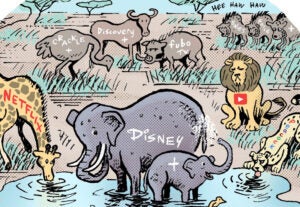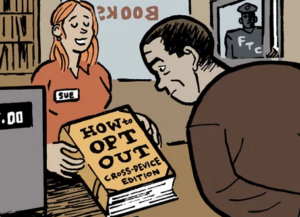 “Data-Driven Thinking” is written by members of the media community and contains fresh ideas on the digital revolution in media.
“Data-Driven Thinking” is written by members of the media community and contains fresh ideas on the digital revolution in media.
Today’s column is written by Brad Nunn, director of trading operations at Varick Media Management.
In 2012, the IAB first defined a “viewable” impression as one that’s at least 50% visible for at least one second. In doing this, the IAB initiated a slew of questions and concerns about how ad dollars are spent and how efficiently partners manage waste.
Today, marketers use viewability to measure the quality and value of digital media, often including it as a mandatory goal in campaigns. But what if advertisers’ quest for 100% viewability has caused more harm than good
Viewability changed the way online advertising is transacted. Traditionally, digital ads were paid for when the bid request was accepted, regardless of where the ad was placed. So, even if the consumer didn’t see it, the advertiser still paid for the impression. Viewable impressions allow marketers to pay only when their ads become viewable. Brands and agencies quickly began mandating that all transacted impressions be 100% viewable.
Aiming for 100% viewability focuses campaigns on pricing, limits scale and increases costs. Many factors make campaigns successful, and focusing on just one hinders overall results.
There is not enough quality inventory available in the market, and the small amount that is available is extremely difficult to access. The goal for 100% viewability is an extreme target to attain. By limiting inventory options to a specific area, such as above or below the fold, marketers reduce the opportunity to reach consumers. Since these impressions aren’t plentiful on the open web, marketers have to look to the private marketplaces, but this leads to increased inventory costs while also limiting opportunities for optimization. A brand could pay a premium on top of a premium.
Rather than decreasing efficiencies in buying and compromising the quality of a campaign with excessively high-viewability KPIs, a more balanced and realistic approach can drive better performance. In my experience, a viewability benchmark in the 75% to 85% range results in more efficiency on buying impressions.
This slightly lowered benchmark reaches a widespread audience, allowing for greater opportunities for conversions, and also drives operation costs down significantly. I’ve seen instances when purchasing at a 90% viewability mark, rather than 75%, increased vCPM cost by 170%. A more moderate approach that aims for 75% viewability as opposed to 90-100% can save advertisers money while maintaining the same campaign performance.
Trends and our understanding of them evolve. Is efficiency more important than achieving 100% viewable? I think the answer is simple. While viewability remains important and continued grooming of the space is required, the most significant metric should always be efficiency. By only striving for 100% viewability, advertisers miss out on other valuable factors and may compromise their ability to achieve their goals.
Follow Varick Media Management (@VarickMedia) and AdExchanger (@adexchanger) on Twitter.












